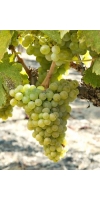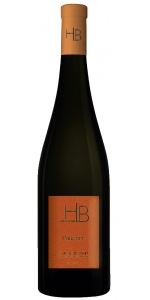Picpoul

Picpoul, or Piquepoul, is a variety of white wine grape that is grown in France, mostly in the Languedoc region or in the Rhone Valley. This grape variety has several types—Piquepoul noir, the dark-skinnned variety and the light skinned type, Piquepoul blanc. Another type, Piquepoul gris, also exists, although it is not widely planted. Piquepoul blanc is the most planted type of the grape variety and it is grown more in France. This variety buds late in the year and has been a popular grape variety in the region. Picpoul wine was first thought to be poison, but after a well-known visitor drank a glass and labeled it safe, the myth was debunked. It was believed that the variety was initially mixed with Clairette. The grapes are high in acidity. Picpoul grapes tend to produce a low yield and are sensitive to diseases, such as oidium. In France, Piquepoul blanc is typically blended or is created into varietal wines. Both the blanc and noir types of the variety are used for Chateanuneuf-du-Pape. The grape variety creates wines that are known for their signature mineral taste, fresh citrus flavor, and high acidity. Picpoul wine pairs well with seafood dishes such as oysters, grilled fish, shrimp or crustaceans.
Picpoul de Pinet H.B. Chevalier Patience is a white wine made from 100% Picpoul.
Clear and crystalline color of an intense pure yellow with golden reflections.
The aromas in retro-olfaction are particularly faithful to direct olfaction, also intense, complex and extend long in the final too.
It is a fresh, generous and round wine with a rich taste balance.
The entry is supple, the beautiful natural freshness of this exceptional Picpoul is revealed from the middle of palate and extends beautifully on the finish.
The nose is very expressive, flattering and complex.
Pomerols Picpoul Pinet HB Languedoc is made from 100 percent Picpoul.
Pale yellow color with green tints. Fresh and fine aromas of grapefruit and exotic fruit. Lime flavors, with typical focusing acidity, are hallmarks of Picpoul. Our best value, this wine impresses novices and hardened geeks equally.
- back
Selected Options
Grape Types
Categories
Pricing
Countries
Regions
Grape Types
Wineries
Organic/Free Shipping
All older vintage wines have been purchased from a single collectors cellar. Pictures can be requested before shipment.
Villero is undoubtedly one of the most important vineyards in Castiglione Falletto in terms of quality and exposure.
The soil is clayey and calcareous, with a south and southwest exposure. The combination of exposure and soil give us a structured and powerful Barolo, with a deep aromatic profile. The tannins are smooth and soft, thanks to long maceration.
Barolo Villero is a long-lasting wine, capable of reaching its full potential even many years after the harvest.
Wine Production
Villero is distinguished by a careful selection of grapes, perfect destemming, long macerations with submerged cap.
Tasting Notes
Clear bright ruby colour with very light garnet red reflections; intense and persistent aroma of red fruit with notes of plum and cherry. A pleasant aroma of wood is noticeable after the fruity aroma, anticipating the full taste of a great wine suitable for long lasting life. A succulent, rich, full-bodied and pleasant taste emerges after the woody one, with the presence of slightly ripe red fruit
Food Pairing
Thanks to its viscosity and body, Barolo is the ideal wine to combine with elaborate dishes such as truffle dishes, meat dishes, pasta with porcini mushrooms, game, and aged cheeses. Villero is also perfect with dry pastries or chocolate.
Review:
This Villero shows sterness and class at the same time. The nose is focused on cherrystone aromas, Parma violets, pomegranates and slightly earthy notes. The attack is dry and austere, with firm, dusty tannins soaked in licorice and tar, enhanced by a bright, juicy and polished blood-orange finish. This is a Barolo to discover over the years, even though it’s ready to drink now.
-James Suckling 95 Points


-150x300.jpg)



